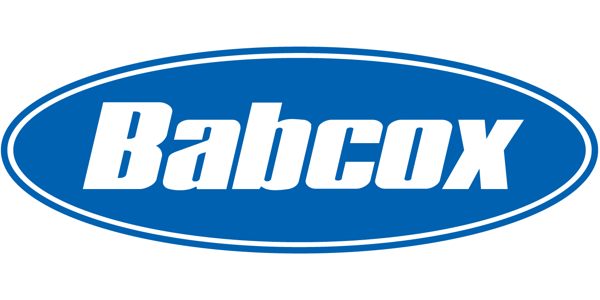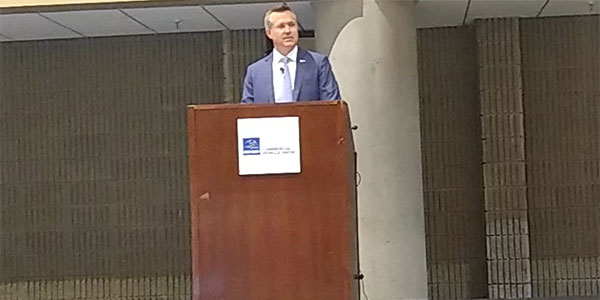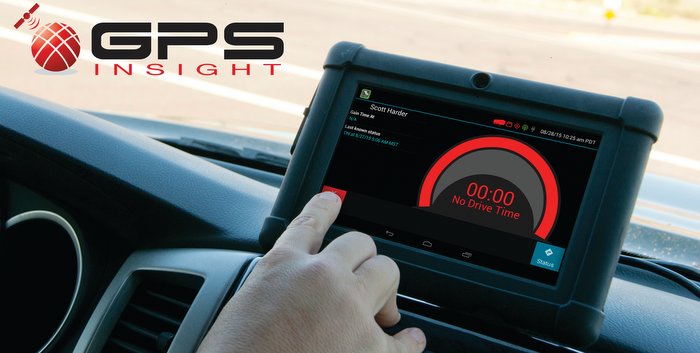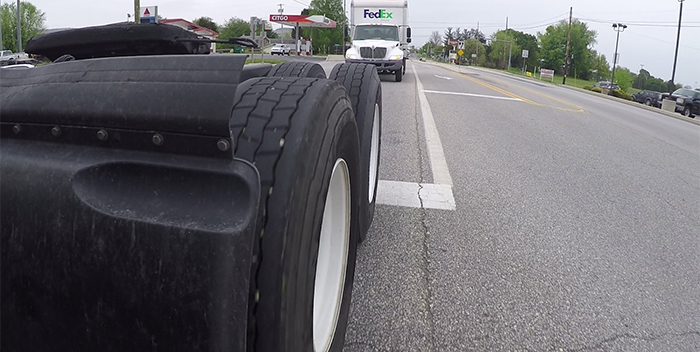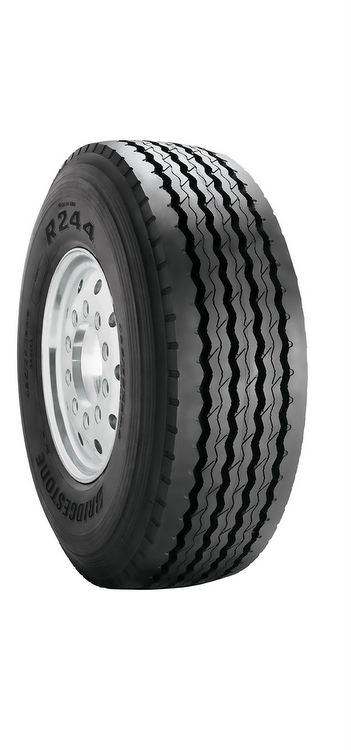When you invest in technician training, you can expect a number of benefits – higher shop productivity and better staff morale among them
“Ongoing training for technicians is critical. For fleets, PM training is especially important. The advent of electronics has made the truck a very sophisticated machine. While it incorporates sophisticated control systems it contains even more sophisticated diagnostic systems, which have taken a good portion of the guess work out of trouble-shooting. As a result, fleet technicians need regular training to keep up with these changes,” says Darry Stuart, president of Wrentham, Mass.-based Quickway Transportation and general chairman of the Technology and Maintenance Council.
There’s not much room to question how this fleet manager feels about the need for ongoing training. There was, in fact, little disagreement among any of the industry leaders we talked to on the subject. Alan Hertzog, director of technical training for Mack Trucks Inc. and Volvo Trucks North America, says, “This isn’t a grease monkey world any more. We look for a whole new breed of technician – people with computer skills. Today’s trucks offer approximately 500 programmable features to customize the vehicles for the fleet. Today’s technicians need to understand how to program these parameters. He or she must also understand how to utilize the 200-plus diagnostic modes in modern trucks. All of this makes ongoing training critical to keep technicians productive.”
Rick Martin, manager of training and technical publications at Arvin Meritor, says, “Anyone hiring into a position who wants to progress should know that training is a major part of that. Any technician with drive wants as much training as possible so he can do his job better, qualify for monetary rewards and improve his employment.”
David Foster, vice president of maintenance at Southeastern Freight Lines, says, “Ongoing training is a requirement to succeed. We’ve placed a lot of emphasis on training not only to gain efficiencies on our own processes but also to move everyone forward.”
It’s not only in improved shop efficiency that training pays off. There are some surprising additional benefits. Foster goes on to say, “When we’re negotiating prices for new equipment, suppliers look at what type of training programs we have in place. Good training helps us negotiate better warranties because suppliers have confidence in our abilities.”
Vince DiShino, director of business development at Regional International & Idealease in Rochester, N.Y., offers a caution about demanding an enthusiastic acceptance of ongoing training from everybody. He says, “We have to be careful about expecting everyone to be at the same level of training accomplishments and capabilities. There are some people who are not interested in progressing, and there are places for such people in shops.”
Incoming technicians
When fleets need to make additions to their maintenance staffs, most managers much prefer to hire technicians with some practical experience, but all too often such personnel are not available. While the days of finding young men or women coming off the farm are long gone, military job fairs have proved to be a valuable source of experienced candidates for many fleets.
Trade schools continue to be another source of young people who have been exposed to some of the basics, but, as most fleet managers know, these vocational school graduates generally still need a good amount of support before they’re ready to handle assignments on their own. Good vocational schools will provide an introduction to diesel technology and instruction in the service and repair of the vehicles and equipment that technicians will encounter on the job. Training programs can also improve the skills needed to interpret technical manuals and to communicate with coworkers. In addition to the hands-on aspects of the training, many institutions teach communication skills, work ethics as well as the basics of math and physics and logical thought processes.
In general, unskilled new hires are assigned tasks such as cleaning parts, fueling and lubricating vehicles and driving vehicles into and out of the shop. Beginners usually are promoted as they gain knowledge and experience and as vacancies become available. Before putting new people on staff, some fleets make formal efforts to determine candidates’ skill levels. For example, Transport Service, based in Oakbrook, Ill., actually gives potential employees tests that the fleet put together. After a few months’ experience, most new technicians can perform routine service tasks and make minor repairs. These workers advance to increasingly difficult jobs as they prove their ability and competence. During this time they are often assigned to work under a more senior technician on engines as well as related components such as brakes, transmissions and electrical systems.
Peter Nativo, vice president of Transport Service Co., says, “We have different levels of training that result in pay increases for technicians. For example, a technician must be certified to work on air conditioning. If we hire a person that’s not certified but later gets his certification, his terminal manager can put in for a pay increase for him.” Generally, technicians with three to four years of on-the-job experience will qualify as journey-level diesel technicians.
Fleet managers regularly send experienced technicians to training classes conducted by manufacturers or vendors in which they can learn the latest technology and repair techniques. Technicians also regularly receive updated technical manuals and instructions outlining changes in techniques and standards for repair. It is essential for them to be able to read, interpret and understand manuals to keep abreast of changes.
A challenging situation
And products change rapidly in our industry. European truck manufacturers build their products more in line with the process used by American automobile manufacturers. When Ford builds a car, it does so with all Ford parts or parts over which it has control. When Kenworth builds a truck, it does so with many parts specified by its customer and purchased form independent component suppliers. The resulting process is unique in the world but one that is prized by fleets across the country because they want the ability to spec the components that work best in their particular operations. It also results in a very challenging situation for many technicians who need to be familiar with various models of engines, transmissions, brakes, air systems etc and suppliers who must make training available at reasonable costs so their products can be properly maintained.
This challenging situation is not likely going to change even though truck builders attempt to limit options available to their customers. Volvo/Mack’s Hertzog says, “On-going training is even more critical today than it was 10 or 15 years ago because of the evolution of electronics and emissions. Our primary goal at Mack and Volvo is to reduce the downtime of a vehicle being re-paired. A truck’s wheels have to turn for the customer to make any money. Our courses for both dealer and fleet technicians are designed to have the truck serviced or repaired as quickly as possible and get it back on the road so it can generate revenue.”
Determine needs
While most technicians, those who want to progress in their professions, are more than willing to participate in ongoing training programs, the reality of such training is often prevented by management. Darry Stuart says, “The most important activity in any shop is preventive maintenance, but it seems very difficult for a fleet manager to take a new technician, sit him down in the break room and let him review the fleet’s PM procedures, which, of course, should be available for review. A new hire, even one with experience, should have two or three hours every day for a week to go through those procedures. Too often, a new tech is put to work immediately.”
So how can a fleet manager determine his shop’s training needs? If you code the various repair procedures in your shop and the corresponding times they require, compare the averages for particular jobs with standard times. An evening in the shop full of pizza and training by a vendor might help cut those that are too far out of line. Volvo/Mack’s Alan Hertzog tells of the fleet that had 70 air conditioning problems repaired but averaged two hours to do so. After a training session, the fleet took 20 percent off the average repair time.
Rick Martin tells us that Arvin Meritor has skills assessment tests available for its products that can be taken on line. To learn more, go to www.meritorhvs.com or contact your local Arvin Meritor representative.
Stuart suggests you practice MBWA, management by wandering around. Show yourself on the shop floor. If you’ve established an atmosphere of open communication, technicians will not hesitate to tell you their problems as you wander by. In your wanderings you can also check scraped components to see if they really needed to be replaced.
Pete Nativo reviews his weekly breakdown report looking for problems. Recently, he found that his fleet was experiencing too many brake chamber failures. He called MGM, his supplier, who put on a school for his technicians on proper product installation and maintenance procedures. Result: problem solved.
Our industry is very fortunate to have suppliers who consider supplying aftermarket training as part of their cost of doing business. Most have personnel in the field that can put on schools at fleet locations to ensure their products continue to perform satisfactorily, but its up to you to make sure that what’s being presented is in line with your policies. Remember, vendors want to sell parts; fleets want to avoid buying parts unnecessarily.
Where to go
What’s the best training for shop technicians? Stuart says, “On the job training on the PM level. Some classroom training is fine, but training by an older mentor is best. Too often though a mentor simply shows the trainee how to do something, and the young tech never gets a chance to put his hands on the work. The mentor should do some awareness training then let the trainee do the work using the ‘five minute rule” – if you can’t you can’t figure what’s wrong or need help after five minutes, ask the question. To me training is an ongoing process on a minute to minute basis by whomever is in charge of that particular operation.”
Southeastern Freight Lines uses a three-phase training program. The first, called ACE for Associates Continuing Education, is comprised of 16 self-study modules that technicians can complete at there own pace. When they finish the program they get and extra 50-cents per hour in pay. The fleet also has a trainer on staff who conducts such sessions as the proper use of volt-ohm meters and warranty recovery. Finally, it uses vendor schools, which are held during normal work hours. Vendors are required to cover all shifts so all employees have the advantage of the program.
Transport Service Co. schedules vendor supplied training whenever a new product is introduced into the fleet to ensure technicians are familiar with any new maintenance procedures. It has also installed 42-in. television screens in break rooms and broadcasts training videos, which are generally sourced from suppliers, to technicians.
Whatever you do, Vince DiSchino says, “It’s important to start a training program with the basics. Too many technicians don’t understand the basics of electrical. They don’t understand the basics of air systems. They don’t understand the basics of fasteners. Too much time is wasted when technicians don’t understand the basics.”
Whether it’s to familiarize technicians with new technology or to reduce high cost maintenance items, ongoing training is a necessity. You’re going to part with some money to get that training. If you’ve done your homework and scheduled the right training, it will come back to you in improved efficiency; therefore and investment not and expense.

